The Best (Worst) School Year Ever. Barbara Robinson. 1994. 117 pages. [Source: Bought]
First sentence: Unless you're somebody like Huckleberry Finn, the first day of school isn't too bad.
Premise/plot: This book is a sequel to the Best Christmas Pageant Ever. Both books are narrated by a girl named Beth who bear witness to the awfulness of the Herdman family. The book loosely takes place between the first and last days of school. The chapters are more episodic than linked to one another. All focus in on the Herdman family. Some chapters are better than others. I wouldn't say that any were wonderful.
My thoughts: I really LOVE, LOVE, LOVE The Best Christmas Pageant ever. And I think the reason why was that it had a point--a redemptive point. The Herdmans surprised everyone with their humanness, and, they weren't just the town joke when all was said and done. That isn't the case with The Worst Best School Year Ever. While there was one touching moment when Beth, the narrator, noticed Imogene at her best, that alone wasn't enough to make up for all the "let's laugh at the Herdmans." The scene I did like was when Beth noticed the initials on the blanket "returned" to baby Howard. I.H. When Howard lost his blanket--he was the bald baby whose head the Herdmans tattooed with waterproof markers--Imogene gave him her old blanket and pretended it was his that she had found. Only Beth suspected the truth. The first book seemed to end with a fuzzy removal of the "us" and "them" distinction. Not so with this one. And that is disappointing.
© 2016 Becky Laney of
Becky's Book Reviews
Daisy-Head Mayzie. Dr. Seuss. 1994. Random House. 56 pages. [Source: Library]First sentence:
It's hard to believe such a thing could be true, And I hope such a thing never happens to you. But it happened, they say, to poor Mayzie McGrew. And it happened like this...Premise/plot: Mayzie McGrew shocks everyone--first everyone at her school, and, then later the nation--when a daisy suddenly appears growing out the top of her head. So many unanswered questions?! What's to be done?!
My thoughts: I had never read this one before. Was I missing out? Not really. The story is a bit out of control and all over the place. Which may sound like a typical Seuss story, and, in many ways--at least in theory--it was. It just lacked a certain something.
Have you read Daisy-Head Mayzie? Did you like it? love it? hate it? I'd love to know what you thought of it!
My Many Colored Days. Dr. Seuss. Illustrated by Steve Johnson and Lou Fancher. 1996. Random House. 32 pages. [Source: Library]First sentence:
Some days are yellow. Some are blue. On different days I'm different too.Premise/plot: There's a color for each mood in My Many Colored Days.
My thoughts: I like the idea of this one, the premise of it. I like the exploration of moods and emotions and feelings. Of feeling many different ways, and, yet still being "me." I also appreciate the simplicity of the text. Some Seuss books are so very, very text-heavy.
Have you read My Many Colored Days? Did you like it? love it? hate it? I'd love to know what you thought of it!
If you'd like to join me in reading or rereading Dr. Seuss (chronologically) I'd love to have you join me! The next book I'll be reviewing is Hooray for Diffendoofer Day and The Bippolo Seed and Other Lost Stories. I'll be doubling up for the rest of the year each Saturday.
© 2015 Becky Laney of
Becky's Book Reviews
A Test of Wills (Ian Rutledge #1) Charles Todd. 1994/2006. Harper Collins. 305 pages. [Source: Library]
A Test of Wills is the first book in Charles Todd's Inspector Ian Rutledge mystery series. He has returned home from war--the first world war--and is on his first case. It will prove challenging in more ways than one. First, the war has left him changed--broken, confused, uncertain. Second, the case itself is tricky. One of the suspects is super-friendly with royalty, and there is pressure to solve the case, but, solve it in such a way that there isn't a scandal. He is arriving on the scene several days after the crime, the murder, and he doesn't even see the crime scene or the body. His work mainly has him interviewing anyone and everyone that might have seen something--or heard something. But there aren't many leads that are fruitful. He has a handful of clues, but, the clues lead him to no one person. There's always something off. For example, the person with the best motive, has an alibi that is solid. The people with opportunity have no motive, etc. So can he do it? can he solve the case?
I liked this one well enough. Ian Rutledge is so very, very different from Bess Crawford. (I've read two or three of the Bess Crawford mystery series also by Charles Todd). Both show the effect of the war certainly. Bess Crawford mainly does this through her other characters: Bess is nursing men who have been wounded--sometimes severely--and/or are suffering from post traumatic stress disorder. The soldiers we meet in the Crawford mystery series certainly showcase the effect of war. But with the Ian Rutledge series it is completely different. It's an inside-out look, for better or worse. Ian is very broken, very disturbed, and we're in his head for the most part. It was an interesting aspect and added a new level to the mystery.
© 2015 Becky Laney of
Becky's Book Reviews
Walk Two Moons. Sharon Creech. 1994. HarperCollins. 280 pages. [Source: Bought]
Gramps says that I am a country girl at heart, and that is true. I have lived most of my thirteen years in Bybanks, Kentucky, which is not much more than a caboodle of houses roosting in a green spot alongside the Ohio River. Did I love Sharon Creech's Walk Two Moons? Yes and no. On the one hand, it's a book that I know I would have either--as a kid-- avoided at all costs (if anyone had dropped hints of how sad it was) OR found myself hating, bitterly regretting having picked it up in the first place. There was a time I thought all sad books should be labeled. So at least you were making an informed decision before you got swept up in the story and invested a part of yourself in it. On the other hand--as an adult--I couldn't help finding it a beautiful and compelling story.
Sal--the heroine--is on a road trip with her grandparents (Gram and Gramps). They are on their way to "see" Sal's mother. That's what readers are told, and, as an adult I connected the dots early on. (Sal's world is upset when her Dad moves them to a new town after learning that the mom wouldn't be coming back.) But much is left a mystery for the reader. I can't honestly say how I would have interpreted the text as a kid. It doesn't really matter. The trip is enlivened by Sal's storytelling. She is telling the story of her new friend, her classmate, her almost-neighbor: Phoebe. (Readers also hear of other friends--classmates--including a boy named Ben.) Phoebe's life is also becoming something of a mess. Though Sal is better at spotting the signs than Phoebe herself. The book alternates between focusing on the past--Sal's new life, her friendships, her memories, her emotions--and the present, the road trip. Both stories are compelling. Mainly through dialogue, the grandparents become fully fleshed characters that you can't help loving and admiring. The way they love Sal, and, cherish her. There is just something sweet about this family. And readers do get to know them better than any other adult in the novel. Unfortunately, I think that is why the book leads me angry. Part of me angry anyway. THE ENDING. I did not see it coming. And it was beyond cruel to this reader. Was it realistic? Yes. Looking back were their signs that it was coming? Probably. But though I guessed one reason why the novel was one of those dreaded SAD books. I didn't the second. And the second HURT so much.
Walk Two Moons is the 1995 Newbery winner.
Have you read Walk Two Moons? What did you think? Like it? Love it? Hate it? Do you like sad books? Or do you avoid them when you can?
© 2015 Becky Laney of
Becky's Book Reviews
When Christ and His Saints Slept by Sharon Kay Penman. 1994. Random House. 746 pages. [Source: Bought]
I've been meaning to read more of Sharon Kay Penman's work for years now. When Christ and His Saints Slept is set in the twelfth century. It begins with the tragic sailing of The White Ship and ends with Henry II ready to be crowned king of England. For readers who like numbers, that would be 1120-1154. It covers the later part of Henry I's reign: his grief and desperation over the loss of his son and heir, his wanting his daughter, Maude, to be his successor; it covers the war--which lasted over ten years--between Stephen and Maude for the crown of England. Readers also get a chance to see Maude's son, Henry, grow up to become "Henry II."
It is a novel with many strengths. One of its greatest strengths, perhaps, is in the wide range of characters or narrators. Stephen and Matilda, on one side, Maude and Geoffrey, on the other. Readers meet the men (and women) who supported Maude, including many of Henry I's illegitimate sons. Readers meet the men (and women) who supported Stephen's claim to the throne. If there is a point to When Christ and His Saints Slept, it is this: war is ugly and cruel and pointless. Readers see Stephen and his supporters--his army--do horribly cruel things in the name of war. Readers see Maude's army do some equally horrid things. One side is not holier than the other. While neither army was as cruel as they possibly could be all the time, without ceasing, year after year, the truth was that England suffered greatly during this tug of war. The truth was very few cared WHO ruled England, so long as England was ruled peaceably and practically. The burning. The stealing and looting. The raping. The killing. The holding of hostages. England was in a BIG BIG mess if this was the best either side could manage.
If the novel has one hero, one "main" character, it would be Ranulf. Ranulf is a fictional illegitimate son of Henry I. It is not a stretch to fit him in historically since Henry I recognized over twenty such sons! Ranulf along with Robert and Gilbert and Miles and Brien, and countless others supported Maude and her claim to the throne. While the novel does focus on the battles, the war, the political mess--it also gives a personal side to the time period. Readers see Ranulf grow up a bit, fall in love, make mistakes, find true love, and settle down to marry and raise his own family.
If the novel is allowed to have more than one hero, well, an obvious choice to me is Henry II. The book covers his teenage years: 14 to 19. The last third of the novel truly focuses on Henry, on his relationship with his parents, with his relationship with Eleanor of Aquitaine. Those last few chapters are far from clean.
I loved how many characters we get to meet and know. I loved that we get to know men AND women from the time period, most of them historical figures, though not all. I loved that readers get introduced to real history. Penman's pacing was wonderful, I felt!
For readers who ENJOY history, When Christ and His Saints Slept is easy to recommend. She gives you enough context so that you're not lost (or at least not lost past all hope!) but it never weighed the text down in my opinion. I admit that "being lost" in a history book is all a subjective matter based on what one does or doesn't know heading into a book, but, I thought she did a good balancing job.
Quotes:
And so began for the wretched people of England, a time of suffering so great that they came to fear "Christ and his saints slept." (171)
If ever there was a woman unable to learn from her mistakes, it was this one for certes. No more than Stephen could. If the Lord God plucked him out of his Bristol prison on the morrow and restored him to power at Westminster, nothing would change. He'd still go on forgiving men he ought to hang, promising more than he could deliver, failing to keep the King's Peace. Maude and Stephen, a match made in Hell. What was it Geoffrey de Mandeville had once said--a lifetime ago? Ah, yes, that Maude would listen to no one and Stephen to anyone. Had there ever, he wondered, been a war like this? Was there a single soul--not related to them by blood or marriage--who truly wanted to see either one of them on England's throne? (281)
"I am truly glad to have you safe, Robert. But tonight I feel as if... as if we'd struggled and panted and clawed our way up a mountain, only to stumble just as we neared the summit and fall all the way down, landing in a bloodied, bruised heap at the bottom. What in God's Name do we do now?"
"I suppose," he said, "we start climbing again."
"How many of our men will have the heart for it?" Rising, she began to pace, "To come so close and then to have it all snatched away like this...it is so unfair, Robert, so damnably unfair!"
"Life is unfair," he said, sounding so stoical, so rational, and so dispassionate that she was suddenly angry, a scalding, seething, impotent rage that spared no one--not herself, not Robert, not God.
"You think I don't know that? When has life ever been fair to women? Just think upon how easy it was for Stephen to steal my crown, and how bitter and bloody has been my struggle to win it back. Even after we'd caged Stephen at Bristol Castle, he was still a rival, still a threat...and why? Because he was so much braver or more clever or capable than me? No...because I was a woman, for it always came back to that. I'll not deny that I made mistakes, but you do not know what it is like, Robert, to be judged so unfairly, to be rejected not for what you've done but for what you are. It is a poison that seeps into the soul, that makes you half crazed with the need to prove yourself..."
She stopped to catch her breath, and only then did she see the look on Robert's face, one of disbelief and then utter and overwhelming fury, burning as hot as her own anger, hotter even, for being so long suppressed.
"I do not know what it is like?" he said incredulously. "I was our father's firstborn son, but was I his heir? No, I was just his bastard. He trusted me and relied upon me and needed me. But none of that mattered, not even after the White Ship sank and he lost his only lawfully begotten son. He was so desperate to have an heir of his body that he dragged you back--unwilling--from Germany, forced you into a marriage that he knew was doomed, and then risked rebellion by ramming you down the throats of his barons. And all the while, he had a son capable of ruling after him--he had me! But I was the son born of his sin, so I was not worthy to be king. As if I could have blundered any worse than you or Stephen!"Maude was stunned. She stared at him, too stricken for words, not knowing what to say even if she'd been capable of speech. Robert seemed equally shattered by his outburst: his face was suddenly ashen. He started to speak, then turned abruptly and walked out. (343-44).
© 2014 Becky Laney of
Becky's Book Reviews
It was twenty years ago today that
Nine Inch Nails' second album,
The Downward Spiral, appeared in record stores.
Despite being an album of relentless nihilism, aggression, profanity, and self-hatred, it is an album I still consider to be among the most beautiful music I know. For a while, I liked really loud, industrial music, but I've grown awfully mellow in my old age, and these days I'm much more likely to listen to something acoustic. (Even ten years ago, a friend described my taste in pop music as boiling down to "songs by whiny white boys". Which was not really true, even then. Well, sort of.) Nonetheless, I still listen to NIN, and, especially,
The Downward Spiral.
I try to avoid explaining my musical tastes, since I spend much too much time analyzing most of my other tastes, and it's nice to have one analysis-free area of the brain. I haven't quite been able to escape an analysis of my love for this album, though. Because it's
this album.
When we don't understand the attraction of a particular item, we often psychologize the people who do in a way that explains them as aberrant to us. My dislike of X is my norm, and so I have to tell a story to explain to myself your embrace of X in a way that maintains my norm. Some items have enough built-in prestige that the story of why I don't like them might force me to have to make some excuses for myself, but we usually still maintain some sense of the appreciator as aberrant. I have no appreciation, for instance, for Mozart's operas, and so even though I feel to some extent that that is a failure of my education and a signal of my plebeian tastes, I also have a sneaking suspicion that people who like Mozart's operas are kind of frilly, effete, decadent, and will, in all likelihood, be the first to die in the revolution. (This is, of course, entirely untrue and a terrible prejudice that you should not emulate or give any credence to.) Items built from the most repulsive of human desires and actions especially call forth such judgments. Plenty of people who don't "get" NIN assume that people who do are one step away from tearing the heads off small children.
Perhaps we are, indeed, on the verge of psychopathy (at least some of us). But the same could be said for lovers of
Thomas Kinkade paintings. Personally, I feel a lot safer with lovers of the dark, repulsive, and nihilistic than with lovers of life-is-a-glorious-cycle-of-song kitsch, because I can't help but wonder when the pains and disappointments of life are going to cause such folks to snap. I assume that to be human means building up a lot of nastiness in our animalistic core, and art allows the structuring and expression of that nastiness, a filter for the excrement of consciousness.
It's no coincidence that I fell in love with
The Downward Spiral when it was released. I was a senior in high school that spring, and faced the excitement and terror of moving from rural New Hampshire to Manhattan for college. Everything was uncertain. I had begun to accept that my sexual identity was not entirely heterosexual, and though I knew
ACT UP said silence = death, I mostly believed sex = death, because what other fate could there be in the age of AIDS? I've never been comfortable with anger, and yet it was an emotion that continued to boil up in me because I felt no ability to be who I wanted to be, no ability to even quite know who the person I wanted to be even was, and while the great wide world was alluring, it was also overwhelming. Typical adolescent angst, but at its apex in those days for me, and something for which
The Downward Spiral could be a kind of soundtrack.
Adolescent angst goes away, and with it many of the talismans used as balms against it. But
The Downward Spiral, while powerfully capable of speaking to an adolescent on the precipice of terrifying adulthood, contains much more than that, and that's why it has stuck with me. The complexity of the soundscape, for one thing. That's where I keep finding the beauty in this music: there is a richness to it, a depth born of all the overlapping notes, chords, beats, and noise. That depth is given power through variety — there is a diversity to the sounds that remains beguiling. The power of the noise comes from the aching quiet that flows across it all. Trent Reznor's voice reaches points of absolute scream, certainly, but there are also moments of tenderness and exhaustion and even, perhaps, momentary peace. The imagery of the lyrics is often wretched, but there's also a defiance to the words, an acknowledgement of so much that is atrocious in life accompanied now and then by a stand against it. For instance, the end of
"The Becoming", which still makes my heart skip a beat: "It won't give up, it wants me dead/ Goddamn this noise inside my head." The last words song on the album are from
"Hurt" and are at least somewhat hopeful: "If I could start again/ a million miles away/ I would keep myself/ I would find a way" — sure, you could interpret that as a suicidal moment, but back in 1994, faced with heading off to a place that at least
felt like it was a million miles away from where I'd spent the previous 18 years of my life, I didn't hear it that way at all. Céline Dion's recording of
"The Power of Love" made me want to kill myself; "Hurt" gave me reason to live.
One of the things I continue to appreciate about the album is that though the speakers in the songs are generally self-absorbed and sometimes utterly despicable, I find room to think about a world beyond them. This is most obvious with
"Big Man with a Gun". I'd grown up in a gun shop, and I knew (and know) the macho allure of weaponry intimately. I don't know of another work of art that so succinctly gets at that allure, the psychopathic virility that is so often the masculine ideal. The song is not remotely subtle. Its
lyrics' blunt vulgarity is appropriate to the throbbing noise of its music. A copy of the song should be sent out with every NRA membership card.
There's a kind of pathetic, aggressive, self-loathing masculinity to most of the songs on the album, and this, too, I find fascinating and powerful. From early on, I heard the album as telling the story of a man who aspired to masculine ideals that he couldn't attain. (I wouldn't have been able to say it that way 20 years ago, but it's basically how I was listening to the songs together.) I got a copy of the first NIN album,
Pretty Hate Machine, soon after
Downward Spiral, and quickly decided that the later album was a kind of sequel to the song
"Something I Can Never Have" — there, the speaker is "starting to scare myself", and in
Downward Spiral, song after song is all about that scare: trying to express it, trying to escape it, being consumed by it.
The songs on
Downward Spiral were, yes, sometimes pure catharsis, and loud enough to wipe out the wounding world beyond their noise. But they also invited, and still invite, a kind of analysis and narrativizing that are, I think, extremely healthy. I spent more hours than I'd like to admit wondering about the meaning of specific lines and even words in the songs, wondering why particular sounds appeared in particular places, analyzing whether I thought the narrator was admirable or disgusting, strong or weak, me or not. I built stories in my mind to justify what was going on in the songs, and entire epic tales to explain the world between them.
Now, 20 years later, I still respond to the musical choices on the album, to the often powerful lyrics, but I also have what those rare pieces of art we encounter at just the right time give us: the memory of vivid early experiences. The world of 1994 and its accompanying years comes back to me through the music I listened to so obsessively. I am not nostalgic for those years. I wouldn't want to live them again. I am vastly happier now. But it's good to have some contact with that lost self, to feel a bit of the way back to what I don't want to fully recover. It's easy, too, to feel that the person I was then — so young, naive, stupid, bewildered — is gone. But he's not. Some trace of him lives in my perception of these songs now as I listen to them yet again. Twenty years is a long time, and it is no time at all.
What Jane Austen Ate and Charles Dickens Knew: From Fox Hunting to Whist -- The Facts of Daily Life in 19th Century England. Daniel Pool. 1994. Simon & Schuster. 416 pages.
I enjoyed reading What Jane Austen Ate and Charles Dickens Knew. I enjoyed reading about various aspects of life in 19th Century England. I won't lie. There were chapters and sections more appealing, more interesting than others. (I'll admit to "skimming" the sections on lawyers.) But, for the most part, I enjoyed it. I liked all the bookish references. I would say most--if not all--sections reference at least one or two British authors. Charles Dickens and Jane Austen, of course, but also including Anthony Trollope, Emily and Charlotte Bronte, Thomas Hardy, George Eliot, etc. (Sadly, he does not include Elizabeth Gaskell or Wilkie Collins.) He takes the time to name specific characters and situations from specific books to highlight and illustrate social customs. Readers may not be familiar with all of these characters, and sometimes what he says about a book could be considered spoilerish. But since these are books that have been around over a hundred years, keeping things spoiler free isn't a necessity.
This one is in two parts. (I read the first part. The second part is a glossary.) As you can see, it covers a little bit of everything--both public and private.
The Basics:
- Currency,
- The Calendar,
- Hogsheads and Drams: English Measurement,
- England,
- London.
The Public World:
- Precedence: Of Bishops, Barristers, and Baronets,
- The Titled,
- How To Address Your Betters
- Esq., Gentl., KCB., etc.
- Status: Gentlemen and Lesser Folk
- Society: Society and "The Season," Basic Etiquette, How To Address the Nontitled, "May I Have This Dance?', The Rules of Whist and Other Card Games, Calling Cards and Calls,
- The Major Rituals: Presentation at Court, The Dinner Party, The Ball, The Country House Visit
- Money: Being Wealthy, Entail and Protecting the Estate, Bankruptcy, Debt, and Moneylending
- Power and the Establishment: The Government, Britannia Rules the Waves, The Army, The Church of England, Oxford and Cambridge, Schools, "The Law Is An Ass," Lawyers, Crime and Punishment
Transition:
- The Horse
- Please, James, the Coach
- The Railroad
- The Mail
The Country:
- Life on the Farm
- The Midlands, Wessex, and Yorkshire
- Who's Who in the Country
- Shire and Shire Alike: Local Government in Britain
- "The Theory and System of Fox Hunting"
- Vermin, Poachers, and Keepers
- Fairs and Markets
The Private World:
- "Reader, I Married Him"
- Sex
- An Englishman's Home
- Houses with Names
- Furniture
- Lighting
- How the English Kept Clean
- "Please, Sir, I Want Some More."
- Pudding!
- Tea
- Drink and the Evils Thereof
- Women's Clothing
- Men's Clothing
- Servants
- The Governess
- A Taxonomy of Maids
- Victorian Recycling
The Grim World:
- The Orphan
- Occupations
- Apprentices
- The Workhouse
- Disease
- Doctors
- Death and Other Grave Matters
And if you'd like to read Jane Austen or Charles Dickens for the Classics Circuit blog tour, you've still got through tomorrow--April 19th--
to sign up!
© 2011 Becky Laney of
Becky's Book Reviews
6 Comments on What Jane Austen Ate and Charles Dickens Knew, last added: 4/21/2011



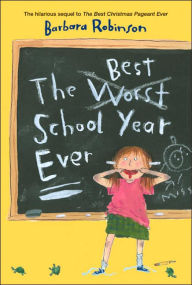



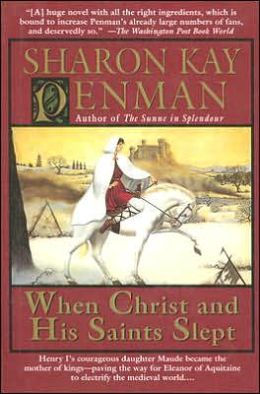
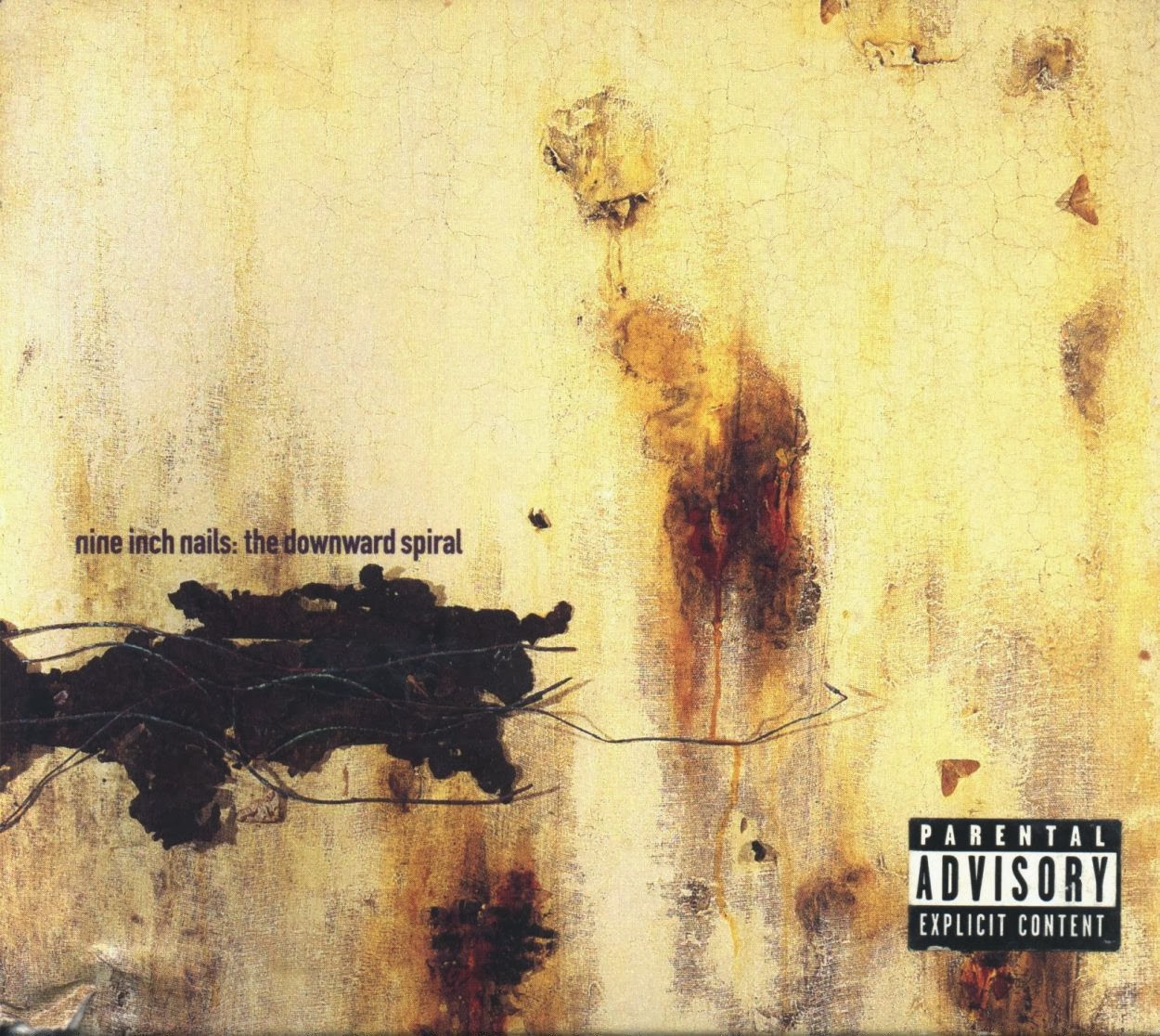

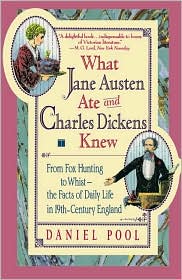
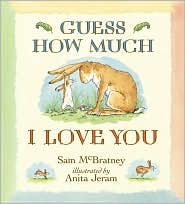
Such a useful book!! I read it a couple years ago and learned SO MUCH about England. Of course, at that time, I'd never read anything by Dickens or Austen.
I love how you paired this with the Dickens/Austen circuit. :-)
My English professor hated that book, I've read it and it isn't all that accurate.
I read this book a few years ago and thought it was really interesting.
I learned too a lot of about life in the 19th Century--England.
I really enjoyed this one, too - such a useful reference tool. :)
Sounds like a good book! I don't know much about that period of English history. :)
http://lector-benevole.blogspot.com/
I read this book a few years ago-I also found it a very useful book-I like to know basic information about how people lived, what the ate etc and this book has a lot of good data-I enjoyed your post a lot